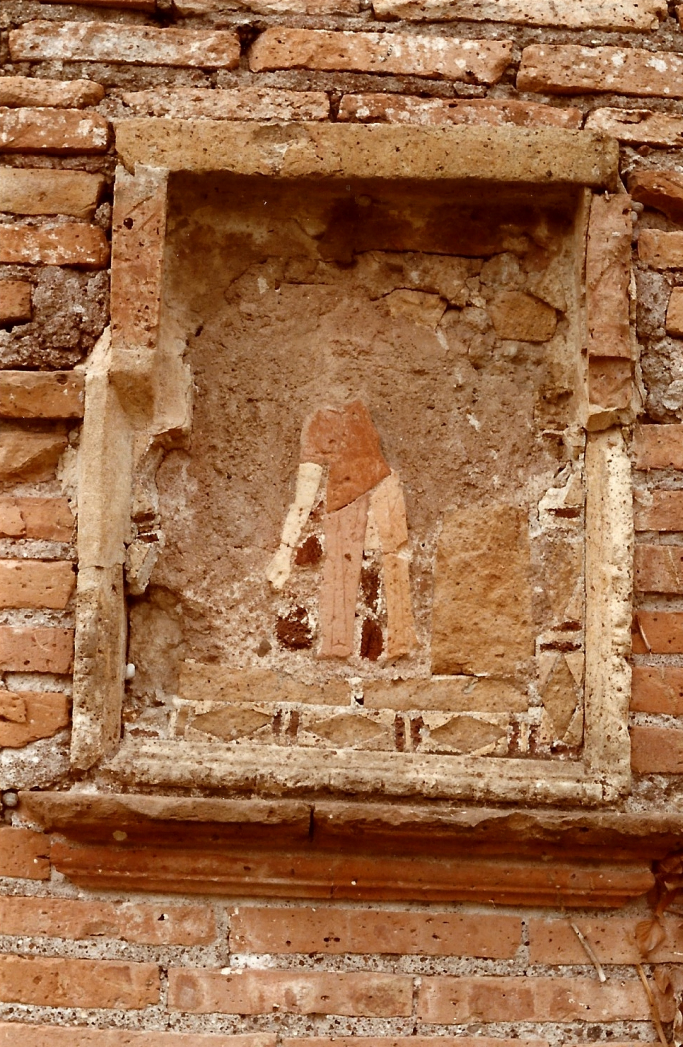|
Only the south-east corner of the House of the Grain Measurers has been excavated. It is at the intersection of two roads. The one to the south was named after the building (Via dei Misuratori del Grano). To the east is Via della Fortuna, named after an intarsio with a depiction of Fortuna in the east facade. The intarsio belongs to the first building period, dated to c. 120 AD. It was inserted at the intersection, high up in the centre of the corner pier of a portico running in front of a number of shops. Fortuna is depicted in the most common way: with cornucopiae and rudder. The south facade consists of a row of shops. A balcony supported by travertine corbels ran across the south facade. In the centre of the facade is an ornamental doorway, leading to the unexcavated interior. It is flanked by brick pilasters supporting a tympanum. In the tympanum is a brick relief of a grain measure. Directly above the door is a brick relief of a stick, perhaps a measuring rod (rutellum) or, as the knots might suggest, the club of Hercules. The reliefs are not enough evidence to think that this was a storage building for grain, as has been suggested. Lanciani mentions another symbol of commerce nearby: "two genii bearing amphorae typify wine" (Notes from Rome, 1876). I do not know where it was and what happened to it. |
 Plan of the building. After SO I. |








